As tensions escalate between an incoherent Trump White House and a confrontational Islamic Republic, an Iranian-American writer considers the revolutions that shaped his destiny
Dawdling along a loping sidewalk on the Asian side of Istanbul—the literal dividing line between East and West—Pesar obsesses about name brands.
“Are they important in America?” he asks, before sharing that they’re a big freaking deal in his native city of Tehran, where 10% of Iran’s 83 million people reside.
I’m not sure what to say, mostly because this is a new responsibility, speaking for an entire country. A semi-big deal, I guess? I don’t know, I tell him, I feel like there’s a fine line between buying something you like and looking like a NASCAR driver. But yeah, some people get off flashing labels as a shorthand for status or depth. In America, I tell him, we call these people tools.
Tall and reedy with round, owlish eyes and a nose that swerves as if from a calligrapher’s pen, Pesar ignores the glances of female passersby and takes this in. Most of his questions about America seem like tangential curve balls, but they all hit a strike zone for my cousin: Ultimately, he’s trying to gauge the cultural distance between an aspiring expatriate like himself and the America that has millions of young Iranians drunk on its myth.
To Persians seeking asylum, escape or merely economic opportunity, the American brand still mattered.
But that was four long years ago, before Donald Trump hollowed out this country like it was a struggling hotel chain desperate for his naming rights—before he jealously scrapped Barack Obama’s denuclearization pact with Iran, renewed crippling economic sanctions and instituted a travel ban that dammed the outbound tide of educated Iranians emigrating to America—as my father did 50 years ago.
Pesar won’t join his uncle. (“Pesar” is a derivation of the Farsi word for “cousin.” Because of the Iranian mullahs’ hypersensitivity to anything resembling criticism, I’m not identifying him.)
Despite reelecting a moderate president who has inspired more women to doff the mandated head coverings while outdoors, Iran remains choked by a handful of fanatical mongers and brims with young people yearning to escape its dead-end economy.
Pesar attended grad school in Turkey in the hopes of becoming more appealing to U.S. immigration officials. In March 2015, standing at the threshold between eastern and western civilizations, I told my cousin, “You’re a man without a country.” He nodded reluctantly. Today, he’s stuck in Iran as our two nations stand on the brink of an unnecessary, reckless and purely ego-driven war.

America’s 45th president, Donald Trump, and Iran’s second and current Supreme Leader Ali Khameni are locked in a political conflict that could lead to real bombs and bloodshed. 
Maybe you’ve heard the drumbeat: sabotaged oil tankers in the Persian Gulf and a downed U.S. drone, an airstrike called off by Trump at the last minute and a check-raise by Iran’s leaders to boost uranium production. No one’s backing down, no one’s making sense.
So far, this narrative has been driven by bellicose governments—our temperamental commander-in-chief and Iran’s supremely grumpy supreme leader. While they posture and prevaricate, everyday Iranians do what they’ve always done—navigate the whims of false idols.
Their country almost charted a much different course, one that could have seen Iran become a secular republic instead of the world’s first Islamic state. Instead, the geopolitical gods intervened and forever bent the fates of the Iranian people, including the Hosseinis.
Battered nation syndrome
My dad immigrated to the United States on a student visa in 1969, a full decade before a popular uprising toppled centuries of monarchic rule.
If you know anything about Iranian history, you probably have this vague notion that the 1979 revolution came down to a two-sided beef between the pro-West shah and the anti-West Ayatollah Khomeini. But that’s as two-dimensional as it sounds. And in Iran—a country roiled by internal ethnic and religious differences, paradoxical motivations and generations upon generations of external meddling—everything has always been more complicated.
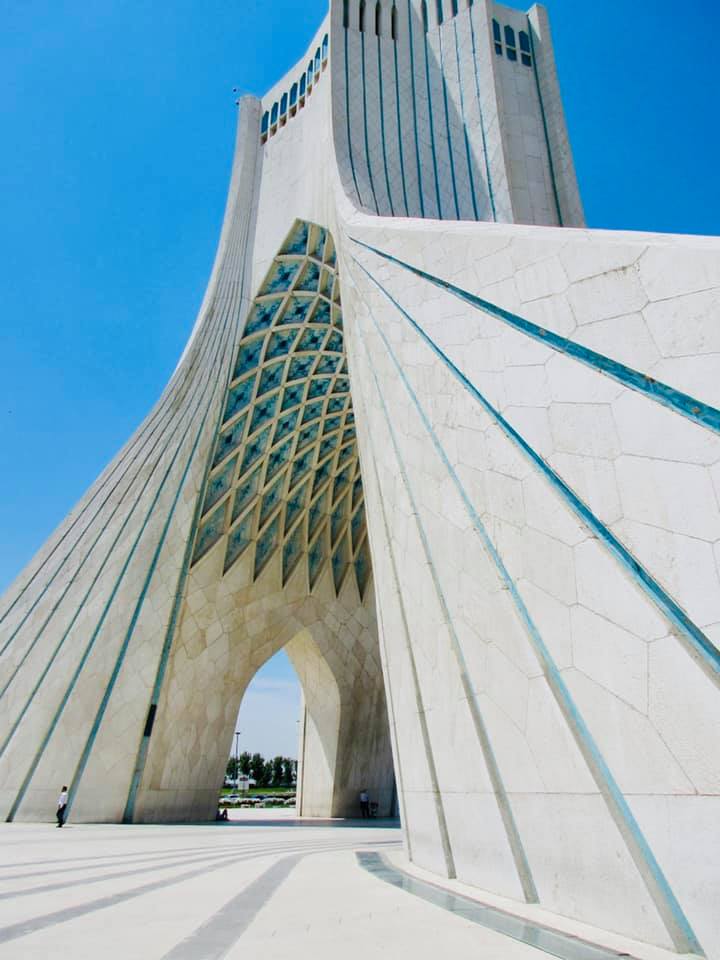
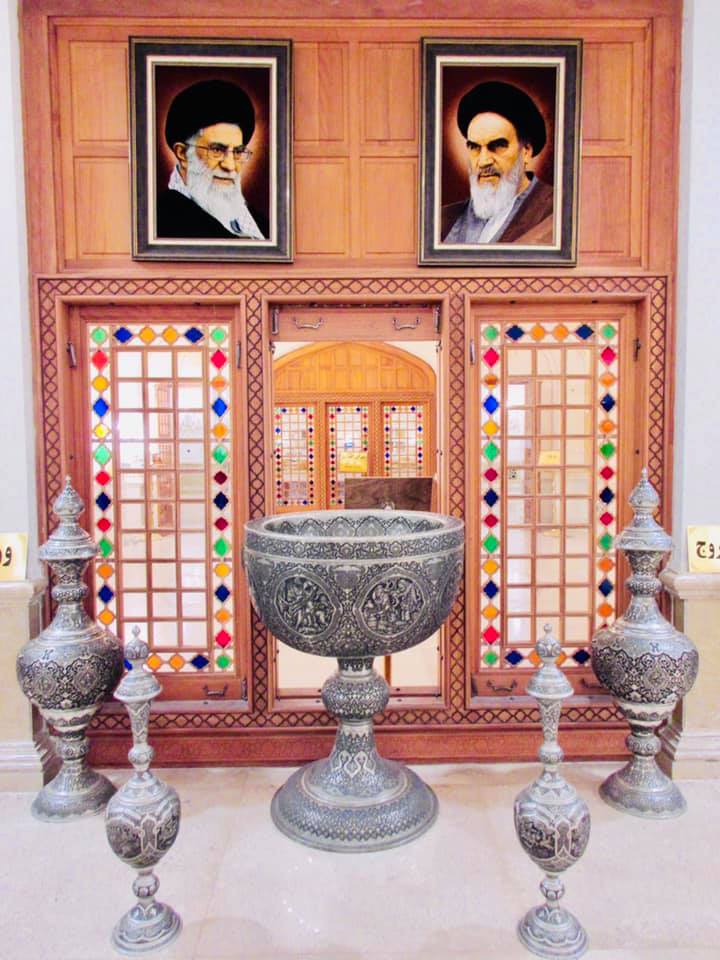
As recently as the late 19th century, in fact, half of Iran’s people still lived a nomadic existence and even more couldn’t speak the native tongue, said Serpil Atamaz-Topcu, a Sacramento State University history professor specializing in this era of the Middle East.
“It was very difficult to control all of Iran,” Atamaz-Topcu said. “There was no real unity.”
The Qajar Empire didn’t necessarily create any, either. Lacking a strong military, the Qajars allowed Iran to fall under the shadow of the competing British and Russian empires around the time of the Industrial Revolution. To stay in power, Iran’s rulers allowed the two countries to veto deals between Iran and outside parties.
But political reformers wanted their country to pursue the technological advances and constitutional changes they saw taking hold in Europe. Shia religious leaders, whose role was compartmentalized by the Qajars, wanted to expand their own power over the state.
Conservative clerics and liberal reformers agreed on one thing, however: The empire had ceded too much to imperialist interests. At the turn of the 20th century, their uneasy alliance sparked a constitutional revolution that was half-successful: While they forced out the Qajar shah, the reformers, at least, fell short of creating a secular political government by and for the Iranian people.
Instead, they succeeded in replacing one monarch with another: An uneducated soldier who crossed the Caspian Sea and claimed the capital before it slipped into the hands of the Russian Bolsheviks, who were carving up much of the Persian mainland in a proxy war with the Brits.
The British-backed forces of Reza Khan seized Tehran in 1921 and negotiated the Bolshevik release of the country’s northern territories. Iran became a nation state after World War I, but under one-man rule with only a symbolic parliament.
Reza Shah Pahlavi was a study in paradoxes. Like his friend and contemporary Mustafa Kemal Atatürk, who transitioned the Ottoman Empire to the Republic of Turkey, he was an ex-soldier with nationalist and secularist ideas. Unlike Atatürk, Reza Shah didn’t fancy sharing power. He crushed popular uprisings while instituting some of the very reforms—creating secular judicial and modern educational systems—his liberal critics wanted.
That strong-arm style kept the shah in power until World War II, when he came into conflict with the British and the Russians, now uncomfortable allies against the creeping threat of Hitler. Reza Shah was making diplomatic overtures to the Third Reich, which the Allies didn’t like.
To secure the continuation of the Pahlavi dynasty, Reza Shah left his country in 1941, provided his 19-year-old son inherited his throne. Mohammad Reza Shah proved more pliable to foreign interests.
Iran became a critical supply route in World War II. The British transported munitions and other supplies to the Russians using Iran’s railroads and highways. The outsiders confiscated Iranians’ property if needed. Clashes flared on the borders.
The Swiss-educated, battle-untested Mohammad Reza Shah faced domestic challenges from the outset. His people saw him as weak and unworthy. They may not have liked the father, but they feared him.
“That’s when the parliament, for the first time, takes over actually,” Atamaz-Topcu said.
The shah saw his power wane as a new prime minister asserted his independence from both the monarch and his foreign allies. England, Russia and the United States all had established footholds in the Middle East country by then, but there was an unmistakable momentum, Atamaz-Topcu said. It was interrupted.
“That could have changed things for Iran in the long run if that actually continued,” she said. This could have transitioned into a more parliamentary democracy-style of administration. But unfortunately, especially with the U.S. involvement, this was not possible.”
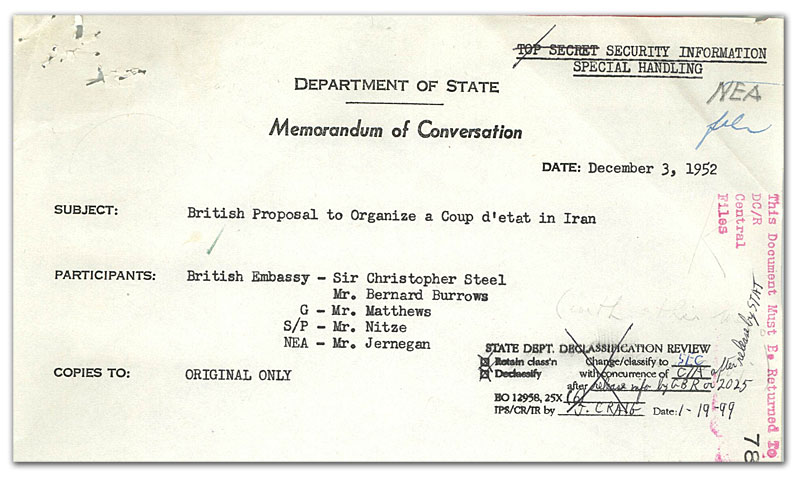
Diverting democracy
It was the early 1950s, and in the southern farming village of Rafsanjan, the Hosseinis caught their first glimpse of American ingenuity.
Hamid bounced on the back of his father’s motorbike as it nettled through the ragged countryside to a shanty abutting a wide, plowed field. It had been a long, jostling ride for a boy his age.
Ali Akbar’s second-born enjoyed these overnight tours of his father’s lands. They would make camp in a shack and wake early to plant pistachio seeds alongside the hard-handed grownups. Sometimes Baba even let him hold the money before he portioned it out. It all felt so magnificently consequential.
The workers were the ones to point out the strange chalk markings on the rocks. No one knew what they signified, but some days earlier they had heard—and then saw—what looked like a giant, metal horse fly circling above. They’d never seen a helicopter. Nor did they know that American mining interests discovered valuable copper secreted in the earth. Too valuable for Ali Akbar to keep. No law insulated a subject from his king’s desires.
Weeks later, Hamid tottered after his father into town, past the glinting bronze statue of their dour-faced ruler. The late morning sun daubed the square in a gauzy brown gold. Up ahead, a scrum of villagers celebrated or argued, Hamid couldn’t tell which. His eyes followed their gesturing hands. Suspended from the second floor of a storefront, he saw a donkey. No, not a real donkey, Hamid realized. Fake, like a large puppet.
Hamid would learn the term for it when he was much older: “effigy.” The men of the village called it by another name: “shah.” After what happened next, they would pretend they never said such a thing.
Nearly 900 kilometers northwest, in the capital of Tehran, CIA-backed fighters were recapturing a country that was shifting away from centuries of dynastic rule.
Mohammad Reza Shah had left Iran. The government of Prime Minister Mohammad Mossadeq had sidelined the monarch with democratic reforms. Mossadeq successfully nationalized the country’s oil industry, which the British had been able to exploit due to its support of the shah. Finally, Iran had the governance and resources to control its own fate.
Britain didn’t let that happen.
Its leaders fumed at losing its sweetheart stake in Persian petroleum, organizing a worldwide embargo and freezing Iranian assets. When that didn’t work, they pitched their U.S. allies on a covert operation to reinstall the shah. President Harry Truman balked, but he was a lame duck. London refined its case to the new administration: Mossadeq was soft on communism. A democratic Iran would turn red in the brewing Cold War. President Dwight D. Eisenhower greenlit Operation Ajax. Together, the Western powers concocted a secret plan to replace Iran’s prime minister with a puppet general, and set the embattled shah back upon his throne.

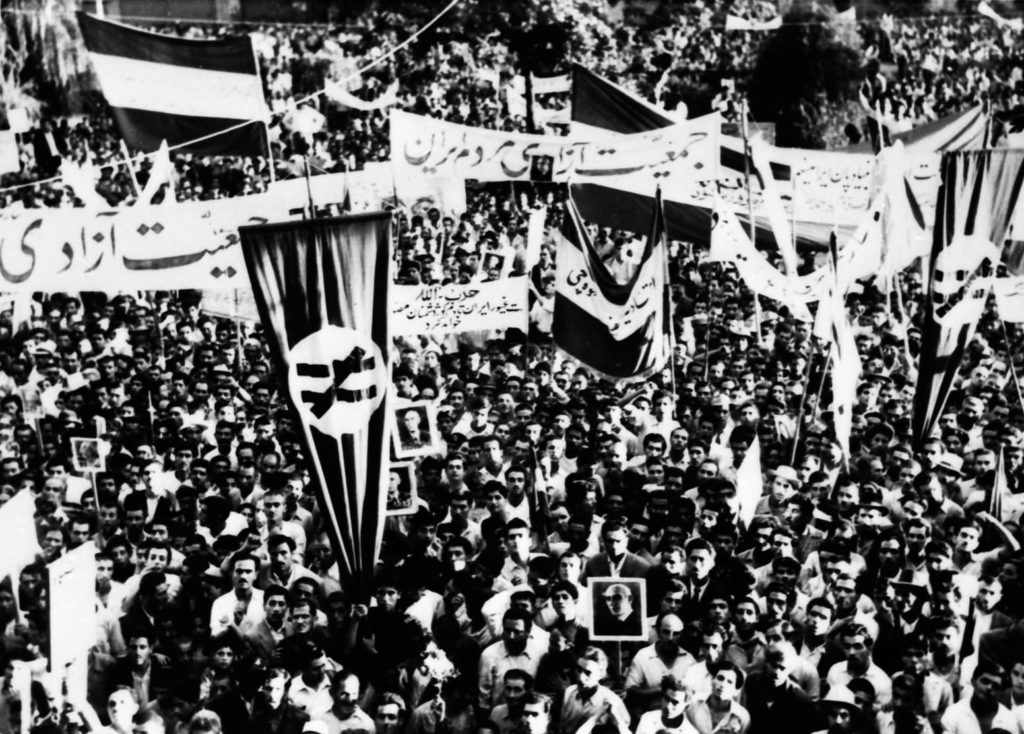
The coup de’tat lasted only three days in August 1953, but reverberates even now, as the United States of America and Islamic Republic of Iran goad each other into an armed conflict.
“Without the American support … the shah really couldn’t survive that long politically,” Atamaz-Topcu explained. “So basically it was the Americans who put the shah into this really strong position and allowed him to be an authoritarian ruler similar to his father.”
If it didn’t happen—if the CIA and British Secret Intelligence Service didn’t prop up a fading ruler who devolved into brutal paranoia—Iran might resemble Britain today, with a mostly symbolic monarchy and agenda-setting parliament, Atamaz-Topcu posited.
But history unfolded the way it did. Hundreds were imprisoned, tortured, executed. Mossadeq spent the rest of his days confined to his home. And a boy who was not yet my father looked to his next adventure.
Bastard of the revolution
Hamid read his wife’s letter again hoping to reverse its portents. It was the summer of 1979 and the 32-year-old California transplant was stuck in powder-keg Tehran. Ruhollah Khomeini was coming, the people said, and the grim-faced cleric with the populist message wanted everyone on the rooftops shouting “Allahu Akbar.”
Hamid joined his sisters and tried to summon the words from the night sky.
“I couldn’t speak,” he recalled recently. “Nothing comes out of me because it isn’t real.”
All my father wanted to do was ask his pregnant wife what happened.
Hamid moved to America in 1969. Despite all those nights of sequestered studying for the cutthroat entrance exams, he fell short of being admitted to Iran’s prestigious universities. After the army, Hamid asked a friend what they would do. Go to America, the friend replied.
The 22-year-old and three mates landed in San Francisco. They adapted quickly to the counterculture lifestyle; the language came with more effort. Hamid’s student visa obliged him to an enrollment-hungry college in North Carolina, but a friend found a way for them to all stay in Northern California. They enrolled in Cosumnes River College and eventually transferred to Sacramento State.
Hamid had gone home before—to bury his older brother and then his father. He went back this time for a happier reason: In 1977, he married my mother, a German woman with permanent residency in the United States. To fall under her green card status, my dad was required to apply through any U.S. embassy outside the United States. Even then, immigration law was convoluted.
Hamid chose the one in Tehran, where his family had moved. His plane touched down in a roiling landscape.
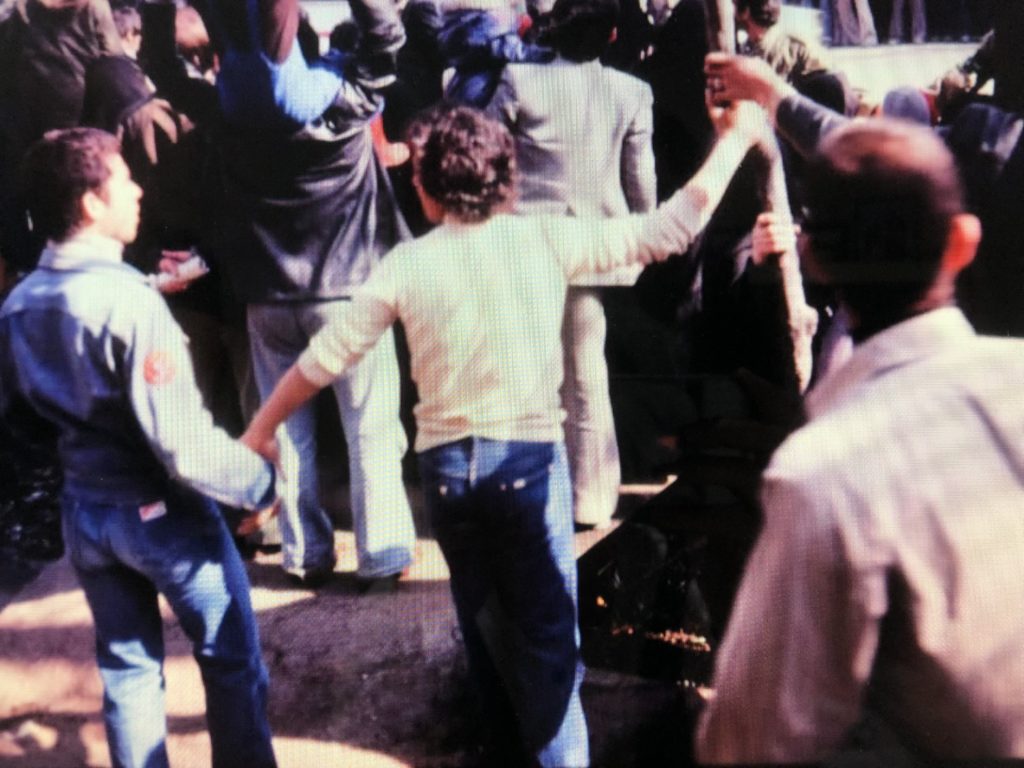
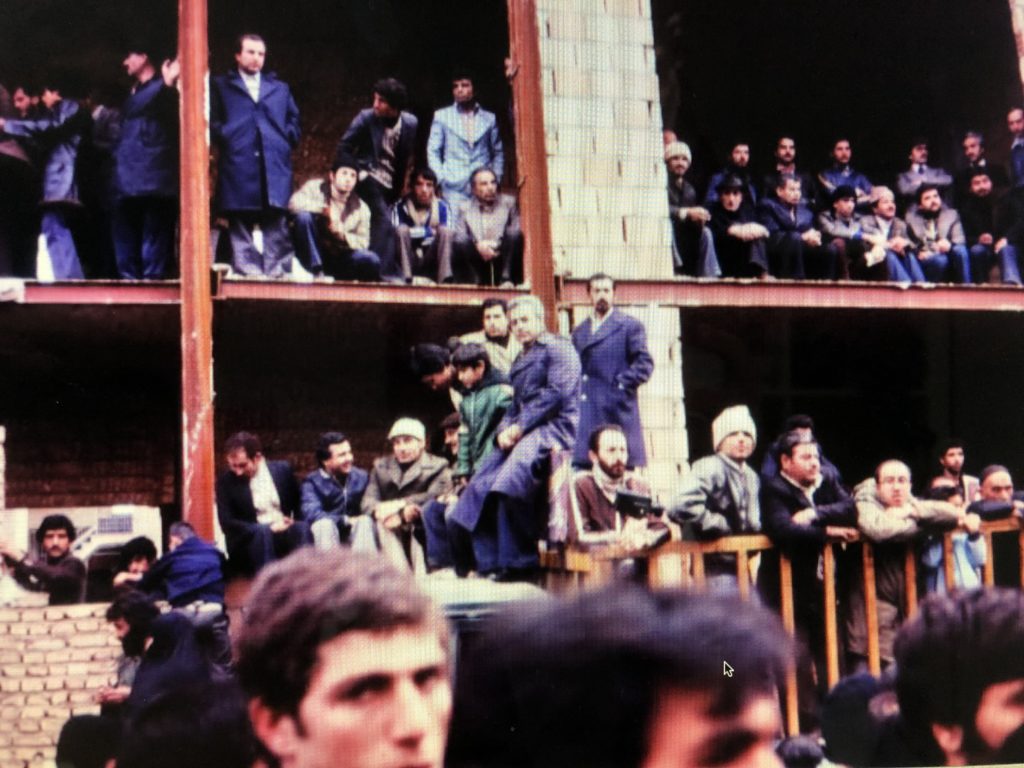
In the years since the United States helped him reclaim power, Mohammad Reza Shah had evolved into the sort of West-courting authoritarian that made his father such a perplexing figure. The shah’s western supporters saw glitzy nightclubs and casinos, Persian women wearing glam fashions and even a red-light district with sanctioned prostitution.
The vast majority of Iranian people experienced a different reality. Thousands were imprisoned and tortured because of their political views. The shah’s secret police, SAVAK, was rumored to have dumped hundreds of dissidents from a plane into the ocean and to regularly bribe people to spy on their families. My father’s cousin once disappeared for weeks because, it’s believed, he was standing near a group of politically active university students. Hamid remembers his mother admonishing loose talk inside the house with these words: “Don’t. The wall has ears.”
Atamaz-Topcu underlined the disconnect between the cosmetic changes the outside world saw and the substantive reforms the shah denied his people.
“He was a big fan of western lifestyle. But the western ideals that would have made the biggest change in Iran—the political ideals—he didn’t try them at all,” she said.
I can’t but help note the echoes to America today: A leader who accepts help from foreign governments, who lives extravagantly and derides democratic ideals. Where have we heard that recently?
“It was almost like here,” my dad said. “The rich got richer and the poor got poorer.”
That discontent created fertile ground for the 1979 revolution.
While Khomeini, an exiled preacher whose sermons circulated throughout Iran via underground recordings, was the spiritual leader of the revolution, he wasn’t its only member. Nor was it a given that he would preside over what followed.
“The whole revolution, it wasn’t just Muslims,” said Ali Hosseini, my uncle. “It was lefties, communists, it was everything. … There were so many groups that came together.”
But that’s the thing about revolutions. You have to be exceptionally lucky to stick the landing. As I write this on our nation’s birthday, I’m reminded the American Revolution ended with a reluctant leader more interested in establishing an enduring system than his own legacy. America got General George Washington. Iran got Ayatollah Khomeini.
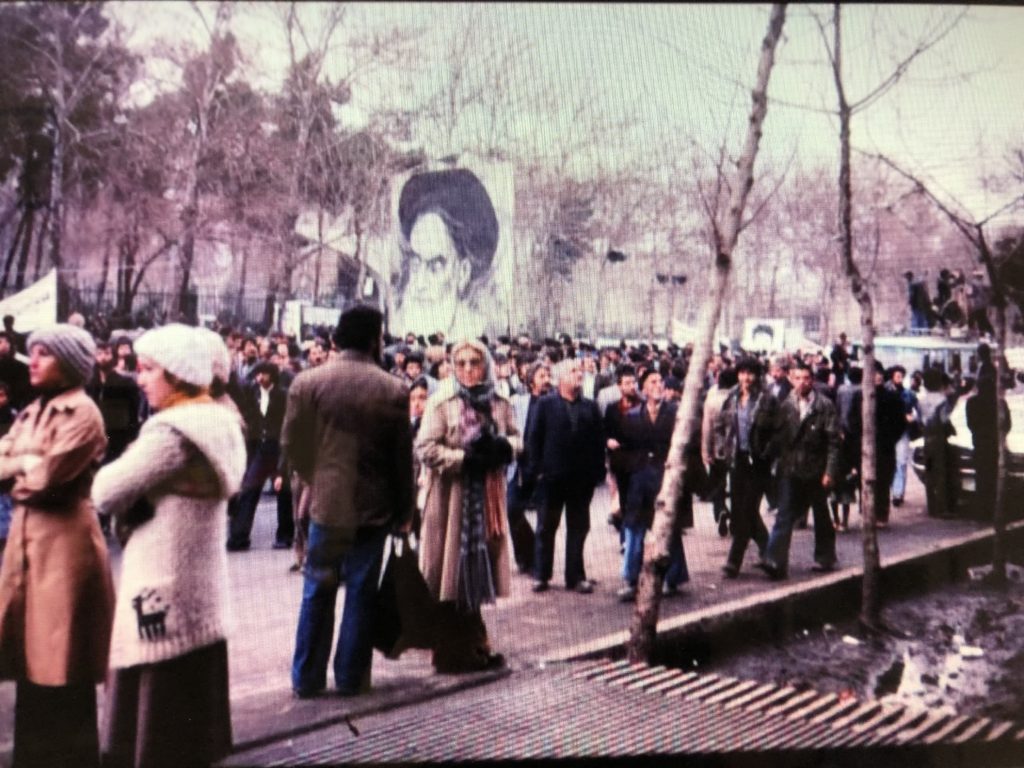
Once he arrived, barreling through the packed streets of Tehran in a victory caravan my father witnessed, Khomeini began asserting his will. He spent the next few years eliminating rivals and allies alike to consolidate his power. Just as the shah removed the hijabs, Khomeini saddled them back on. He was a mirror image of the man he replaced: Secular shah or fundamentalist cleric, they both acted without the consent of the governed.
Iran’s famed universities closed for three years, until they could be cleansed of their “imperialist” curricula and consecrated in the new regime’s version of Islam. Ali watched gunfights at Tehran Polytechnic—now called Amirkabir University of Technology—from his high school window. His wife walked to her newly gender-segregated classroom shielding her eyes from the posters of maimed or killed soldiers on her school walls. She was 7.
Life to them felt unrecognizable.
As for my dad, he finally made it back to California after nine long months. After my mom died in 2016, he found the letters they wrote each other during their involuntary separation. They’re filled with the plaintive, sweet and sad longing of two people who don’t know how their story ends.
What was it the author Philip Roth wrote? “Turned wrong way round, the relentless unforeseen was what we schoolchildren studied as ’History,’ harmless history, where everything unexpected in its own time is chronicled on the page as inevitable. The terror of the unforeseen is what the science of history hides, turning a disaster into an epic.”
The terror of the unforeseen is what these letters dredge up—exchanged by two people who were younger then than I am now.
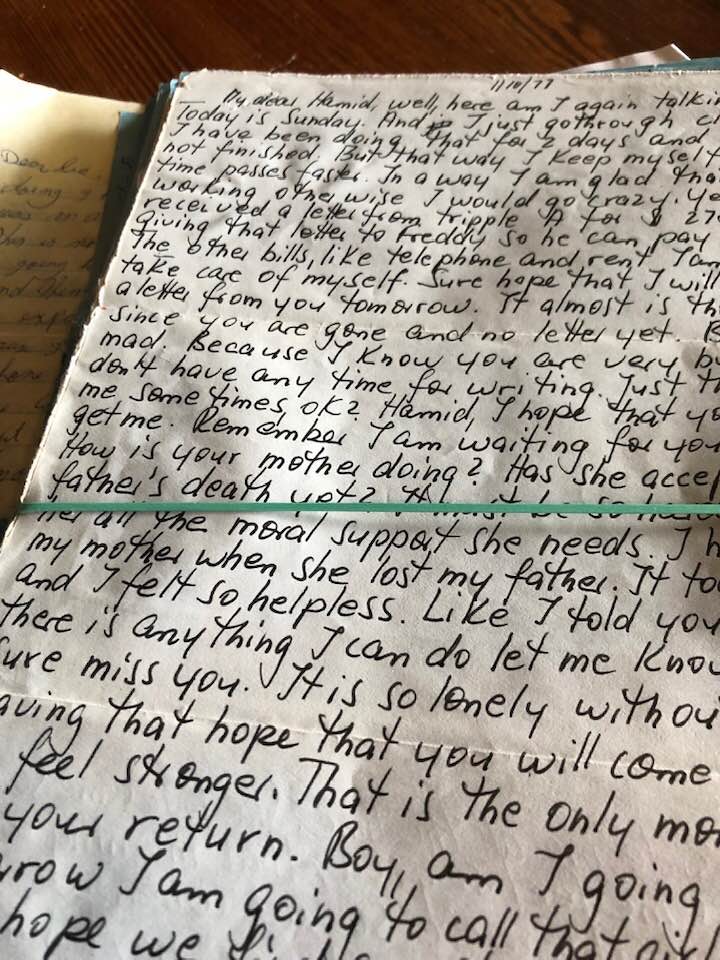
For my dad, they jogged memories of a wife who tried to meet him in Iran, but was stranded in Germany when the Tehran airport shut down; of the car he sold for her airfare and their rent; of the cruel way that distance, time and hardship erode a couple’s resolve and dim their shared memory, until soul mates almost become strangers.
Somewhere in there they lost a baby.
On the rooftop in Tehran, my dad was unable to fete a god he didn’t believe in. Once he got home—to his real home—Hamid and Lissy rebuilt what the revolution sundered. Nine months later they had a child. My dad ran through a list of names until my mom stopped him. She liked that one. She liked what it meant.
And that’s how I came to be called Raheem.
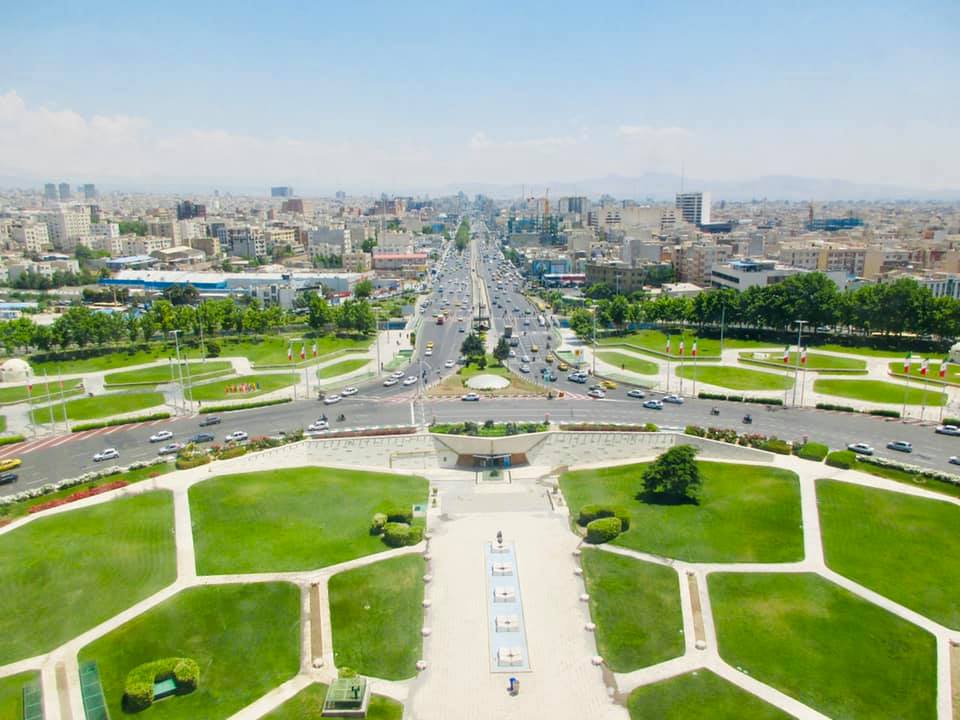
Iran so far away
It’s a weird feeling owing your existence to a personal tragedy and a historical revolution. That’s a cosmic debt I don’t think I’ll ever comprehend.
Maybe that’s why I’ve always felt ambivalent about visiting my father’s homeland. (That, and the fact that under Iran’s conscription law, I owe two years of military service to a country I’ve never seen.) Until now, I’ve only known Iran through the people who left it.
I asked a childhood friend who recently returned from a 10-day visit to Tehran in May what it was like. Jasmin Shoemaker grew up in a house a couple blocks from mine with two Iranian parents. Jasmin said making her first visit to Iran in her 30s was like realizing Atlantis was real. “It was cool to see so many people speaking Farsi and looking like me,” she said. “It was starting to feel like a make-believe place.”
Jasmin and her mother went during Ramadan, and it grated to have to drape themselves in modest coverings and closed-toe shoes in the stifling heat—especially when men around her wore T-shirts.
But the thing that stuck out to her maybe the most was how worn down the people were by the sanctions. Iranians, who are known for generous overtures, were instead haggling over money. Jasmin spent $90 on a hand-carved cane for her husband. The exchange rate: 4 million tumans.
“I felt really awkward and uncomfortable to be dropping that kind of cash when people don’t know where their groceries are coming from,” she said. “I feel like there’s a tension there right now. … How much pressure can people take?”
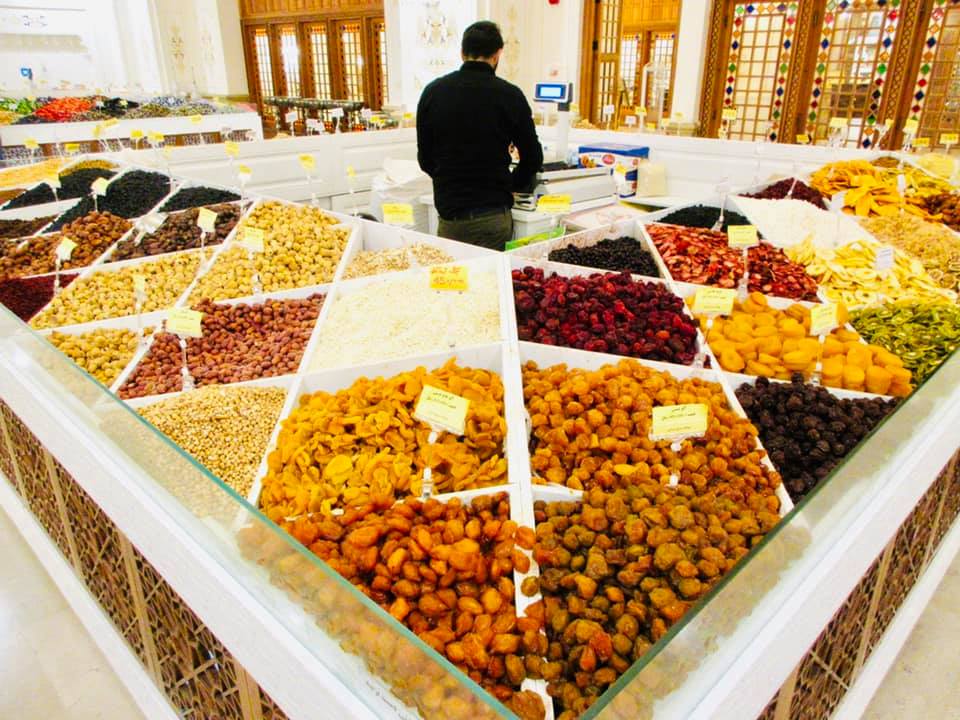
One of the mullah’s sons owns the mall in Tehran, which includes a library patterned after Hogwarts School of Witchcraft and Wizardry. Most people can’t afford to shop there. 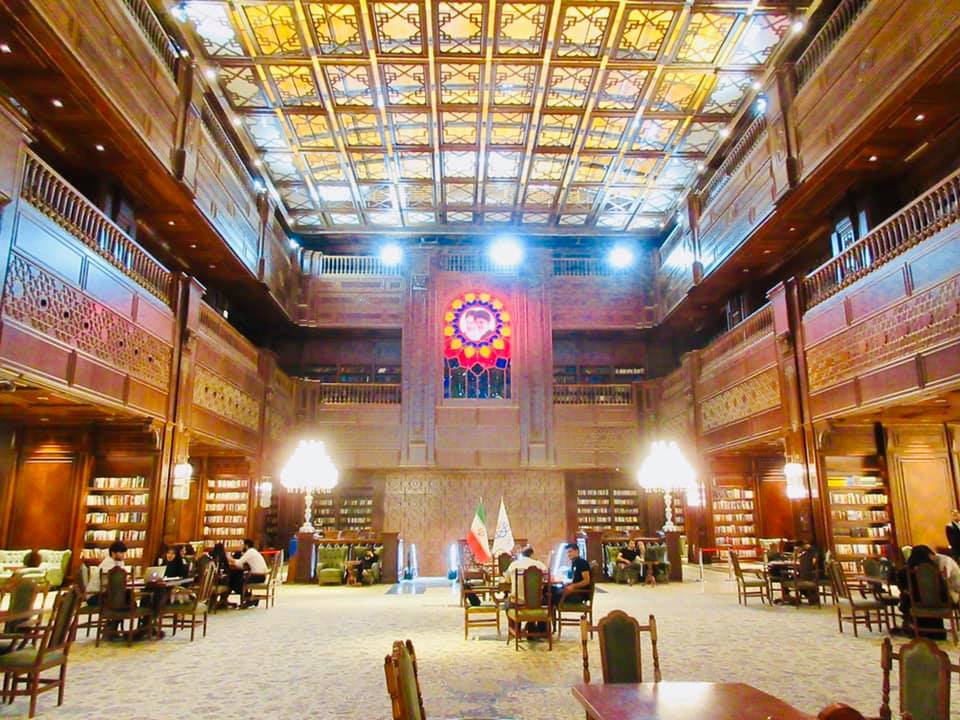
(Photos by Jasmin Shoemaker)
Consider the Iranian predicament: 46% of the country is between the ages of 25 and 54, and the median age is 28. A staggering 69% of the population lives in packed urban centers. Meanwhile, a small cabal of aging and ultra-conservative mullahs death-grip power like they’re already frozen into rigor mortis.
Heap onto that a teetering pension system and the threat of hyper-inflation, is it any wonder so many young people yearn to leave?
In 2009, the International Monetary Fund ranked Iran first out of 91 developed nations in the number of educated citizens emigrating outside the country. More recently, in 2014, Iran’s minister of science, research and technology estimated the county’s brain drain amounted to 150,000 expats each year.
“Iran is not the same Iran,” Atamaz-Topcu noted. “These people, they did not live under the shah’s rule. They did not live under the first years of the revolution and they have different expectations. First and foremost, they want freedom.”
They can’t seem to get it.
It’s been 10 years since the Green Revolution, when mostly young Iranians took to the streets to contest a stolen presidential election. They were put down without mercy or reservation, by religious hypocrites who learned too well how to bolt the doors behind them. My aunt’s cousin learned this on the damp floor of a jail cell, begging a guard to stop kicking him. The student summoned the name of the prophet Muhammad’s daughter. The jailer cursed and rammed a boot into his captive’s head. A week after he disappeared without warning, my aunt’s cousin returned home shaken, whispering that the mullahs import their torturers.
There are reports that elements within the Trump administration—namely National Security Adviser John Bolton—want to squeeze Iran so hard that the people rebel against the regime.
“They want there to be so much pressure … that they’re hoping people will fight their government,” said Assal Rad, a research fellow at the National Iranian American Council.
Both Rad and Atamaz-Topcu see parallels to America’s misguided—perhaps fraudulent—invasion of Iraq, which bequeathed countless deaths and disfigurements, as well as a quagmire that siphoned this nation’s prestige and economic future.
“War is not a distant memory in this country,” added Rad, an Iranian-American who last visited the country in 2015. “It defined a generation—and it defined a landscape. If you step [foot] in Iran, you’ll know there was a war here.”
And there’s little appetite for a new one, whether it’s with the mullahs or United States. In a nation that stretches across a million miles of rugged, mountainous land between the Caspian Sea and the Persian Gulf, still wounded by its own revolutionary history, scarred by foreign intrusion and strangled by gangster-like regimes, Trump’s incoherent strategy is only building popular support for Iran’s hard-liners, Rad said.
Think of it this way, my aunt said: “You would rather deal with a bad dad than a stranger who abuses you, because at least he’s your dad.”
Congratulations, President Trump, you’ve made the ayatollahs look sympathetic by comparison.
My uncle reminded me there’s a saying that the revolution devours its children. He was referring to Iran. But I think it could yet apply here, too.

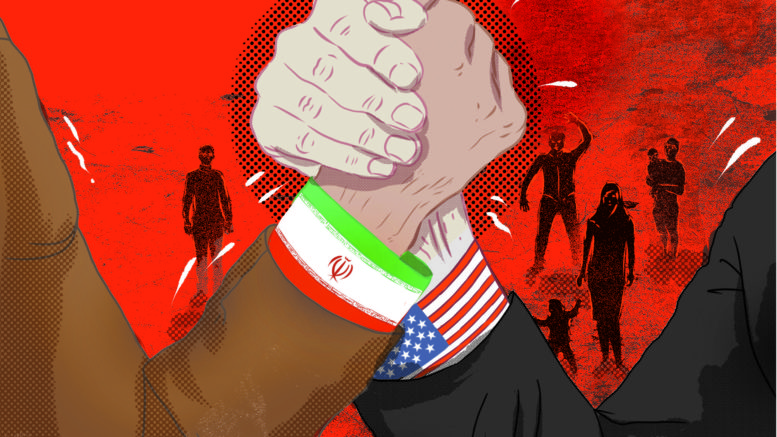
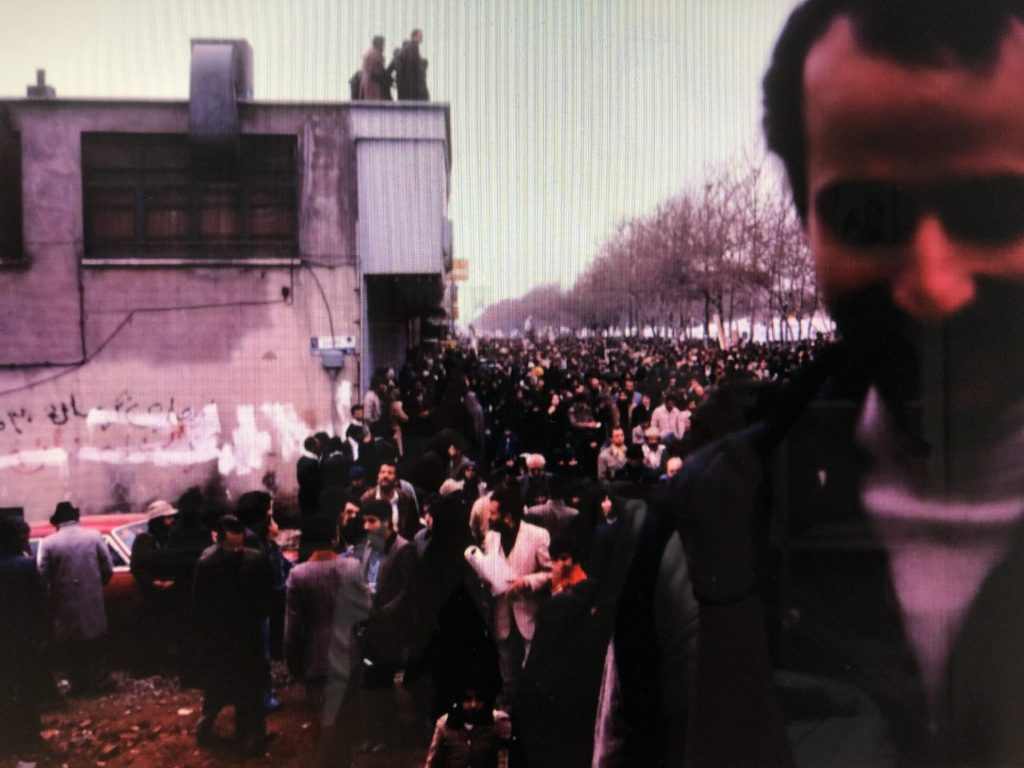
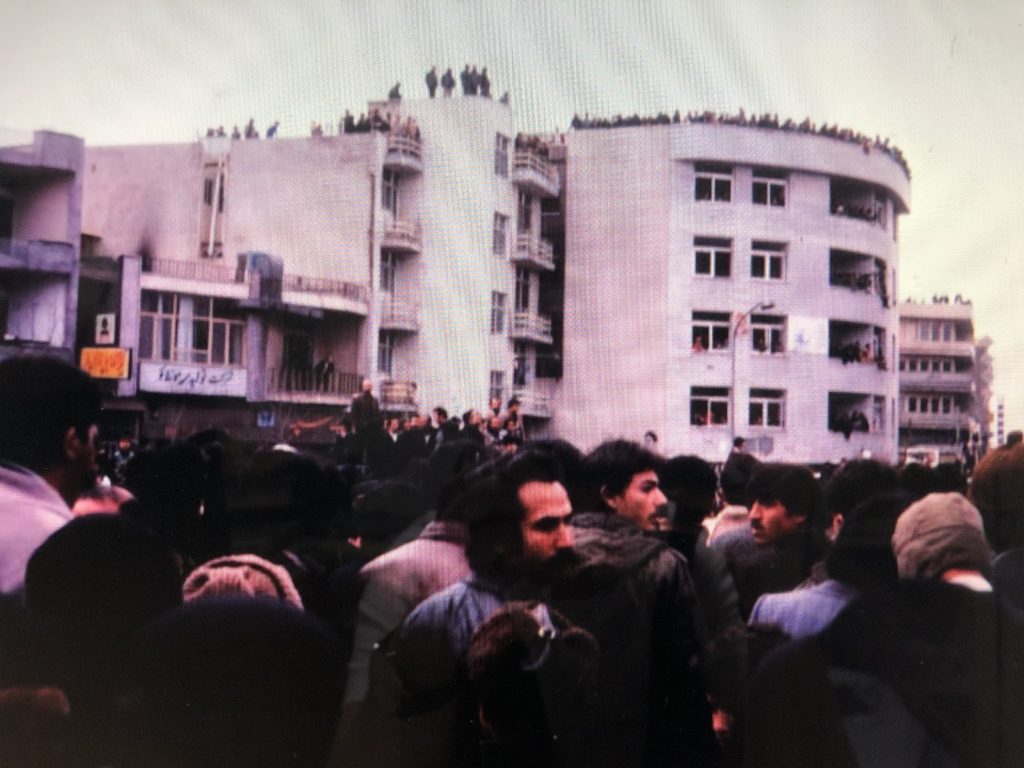
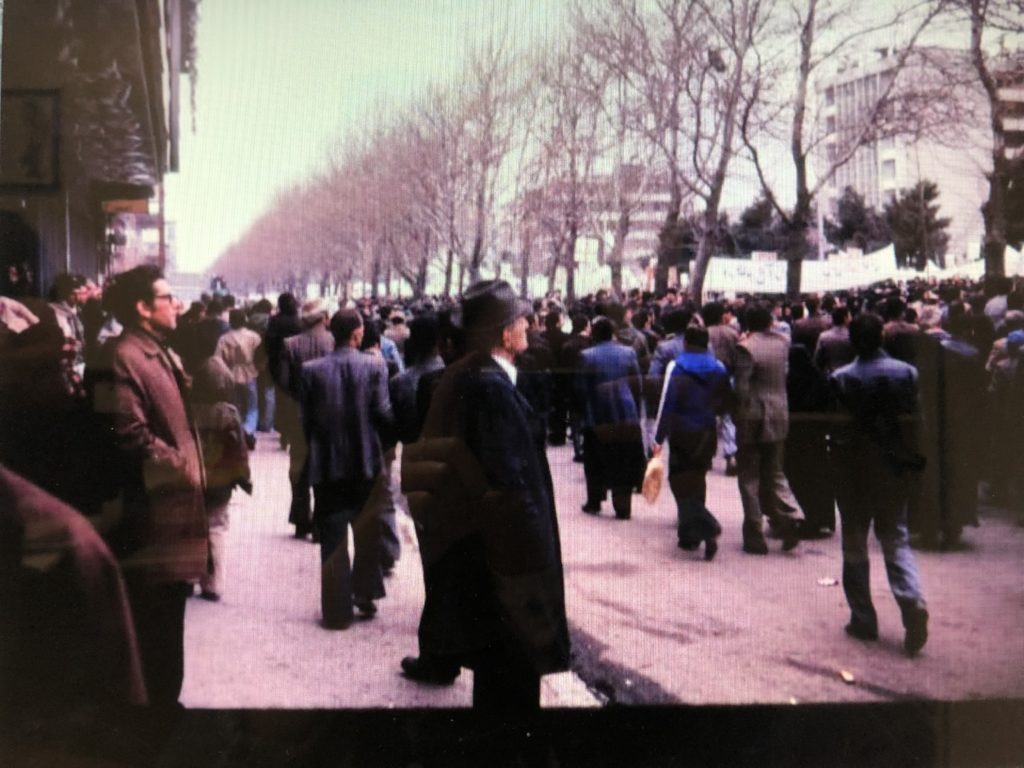




The idea that absent the 1953 coup the Palavi “dynasty” would have likely become a real constitutional monarchy is laughable. Secularism (the Turkish/French kind) is something only the elite educated in Reza Shah’s government schools, and their predecessors in the Qajr elite wanted. The present system has flaws, but to imply it has no popular support is misleading.
Great article Raheem! It’s such a complex history and you laid it out really nicely. Thank you for bringing awareness to this important topic – and I appreciate the impactful closing: “Congratulations, President Trump, you’ve made the ayatollahs look sympathetic by comparison.”